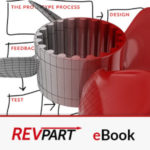For most of our biggest investments — both in our personal and professional lives — regular maintenance is often at the forefront of our minds. Think about your car, your house, maybe some of your appliances — we want to ensure that we stay ahead of any problems and catch any major issues before they arise, so we engage in regular upkeep and “checkups” to make sure that everything is operating as it should be.
It makes sense, then, that injection mold maintenance should be a major concern. These molds can often cost tens or hundreds of thousands of dollars to fabricate — often more than your automobile, maybe even more than your house. Why wouldn’t you want to conduct regular maintenance to protect and maximize your investment?
Injection molding machine maintenance is a just-as-important — though less-overlooked — component of the process. We’ll look at why maintenance for both injection molds and the machines that they run through is of great importance to you, your bottom line and the quality of your parts.
What kinds of problems can occur in injection molds?
Injection molds undergo a lot of stress in the course of carrying out the molding process. Depending on the design of your mold, factors like temperature fluctuations, opening and closing of the mold, ejector pin action, and other movements can all cause natural wear and tear on a mold. A good injection mold will be designed to handle this wear and tear, but unpredictable situations can still arise as a result of these numerous stresses and the nearly innumerable permutations in which they can interact.
Temperature fluctuations, for instance, can cause both internal and external stress on the mold. Especially if the mold is not designed in such a way as to allow for more uniform cooling, molds can expand and contract in response to heating and cooling, and can weaken from the stress — and potentially even crack.
The “moving parts” of the mold are susceptible to friction, “rough” points of contact, and mechanical breakdown. A mold that doesn’t open and close smoothly, for instance, may be subject to impact stress as the two halves meet each other. Ejector pins may not function properly after a certain number of molding cycles. What’s more, the friction of the moving parts, in addition to creating extra heat, may eventually wear away at critical parts of the mold, creating unintended cavity shapes or compromised contact points.
Aside from the aspects inherent to the mold itself, there are also maintenance issues related to the material injected into the mold. As the mold completes more and more cycles, minute amounts of material residue can begin to collect inside the mold cavities. Over time, these deposits can accumulate and affect the interior shape of the cavity — and thus, the shape of the finished part. Deposits in mold runners or the mold cavity can also affect cycle time and, left unchecked, can even begin to prevent the substrate from reaching areas of the mold.
If a mold is used with different materials, these deposits might also create unintended interactions, depending on the chemical makeup of those materials. This, in turn, can affect the structural integrity of the finished product, and creates risks for products used in food or medical applications.
How does injection mold maintenance help?
By regularly monitoring the status and condition of your mold (and the injection molding machine that it’s used in), you (or your manufacturing partner) are able to identify any potential problems and choose your course of action to rectify it. You’re able to address these issues on your terms — not if and when you’re forced to address them (a situation usually brought on by a major catastrophe).

As anyone who’s had to deal with a major maintenance issue knows — whether personally or professionally — “cleanup” after one of those catastrophes is never easy. It’s inevitably costly, it leads to downtime, and there are likely wasted pieces and materials. The cost of repair or replacement might even be prohibitive, depending on the size of your business. In short, the repercussions of a major maintenance problem can potentially irreparably damage your bottom line — and your business.
The cost of regular preventative mold maintenance will almost never equal the amount of money that you’ll have to spend to repair or replace a mold. When done correctly, the time investment will not be prohibitive, either (though the process should always be thorough). Plus, you’ll have the bonus of peace of mind in knowing exactly the status and condition of what might be some of your most significant capital investments.
What does injection mold maintenance involve?
The answer to that question could probably be summed up in one word — awareness. There’s more to it than that, although you’re taking a huge step toward solving any potential problems just by the act of carrying out injection mold maintenance.
It’s also worth noting that the best maintenance policy starts even before the mold is completed. Good mold design, following standard best practices to facilitate uniform cooling and minimized stress both internally and externally, is a great first step. It’s also important to choose a trustworthy mold manufacturer with a track record of success — and quality. Most manufacturers are happy to provide references to past customers, and it’s worth your while to follow up on these references.

The ideal mold manufacturer will be able to help you work out elements like design and material selection while taking your budget into account. A knowledgeable manufacturer can also explain the benefits and limitations of your particular mold configuration, giving you a heads-up on what to look out for when you start your regular maintenance.
From there, your maintenance will involve regular inspection, addressing the issues we talked about above. Check runners and mold cavities for material deposits, and clean or otherwise remove them regularly, before they start creating defective parts. It’s also important to check for corrosion if your material is susceptible to it and there is a risk of moisture entering the mold cavity. Test the strength and structural integrity of your mold, especially if it’s constructed from a weaker material. Monitor temperatures throughout a mold as it heats up and cools, and take necessary steps to attenuate irregular cooling.
You should also create a schedule or a plan for your injection mold maintenance, whether based on the calendar or the number of cycles run. Also, be sure to keep track of the data and information you collect in a centralized log, for easy reference.
With this information and knowledge of the risks involved in ignoring mold maintenance, you’re already on the right track! As you continue to carry out the maintenance process, you’ll likely learn more specific aspects of what to look out for in your particular mold and machine — meaning that your investment is even more likely to stay protected and provide great returns.



